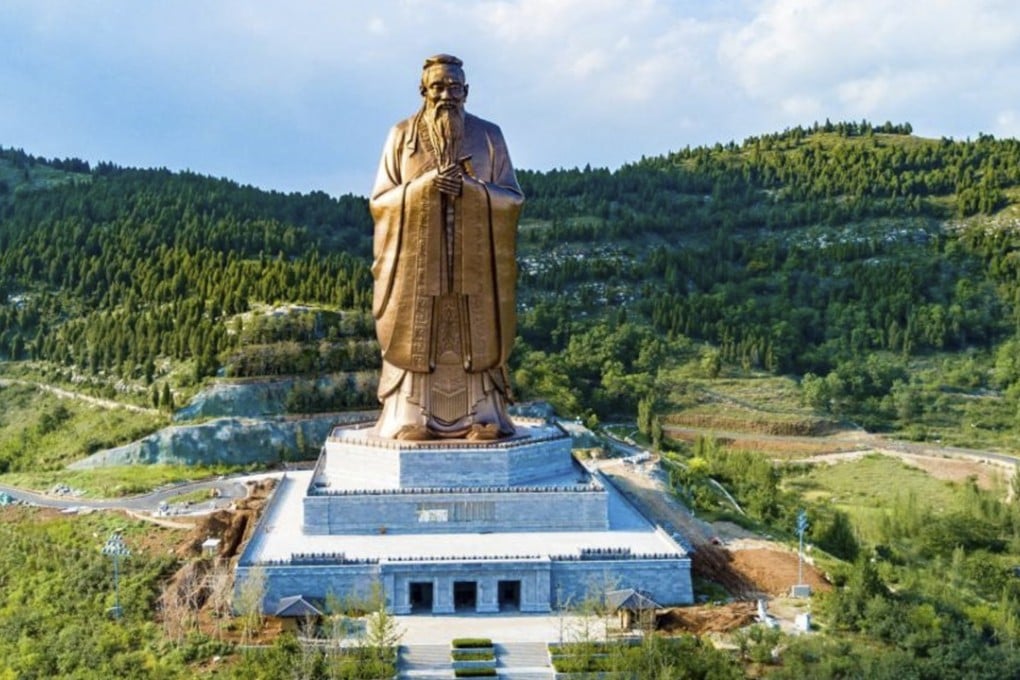World’s largest Confucius statue gets final polish as east China hometown prepares to honour ancient sage
Massive brass effigy in Qufu, Shandong province, which stands 236 feet tall, to be formally inaugurated for Mid-Autumn Festival

The world’s tallest statue of Confucius will be officially inaugurated on Monday in the east China birthplace of the ancient philosopher and teacher.
Made of brass and reinforced with steel, the giant effigy stands 72 metres (236 feet) tall on a hillside overlooking the city of Qufu, Shandong province.
The main body is supported by eight internal pillars and its base covers an area of 7,800 square meters (84,000 square feet).
“The height of the statue coincides with the number of sages among Confucius’ disciples,” Hu Yantao, who headed the construction project was quoted as saying by Xinhua.
Although the statue was first unveiled to the public in 2016, Hu said his team had continued to carry out refinements.
“The [polished brass] outer appearance has been perfected over the past 18 months,” he said.